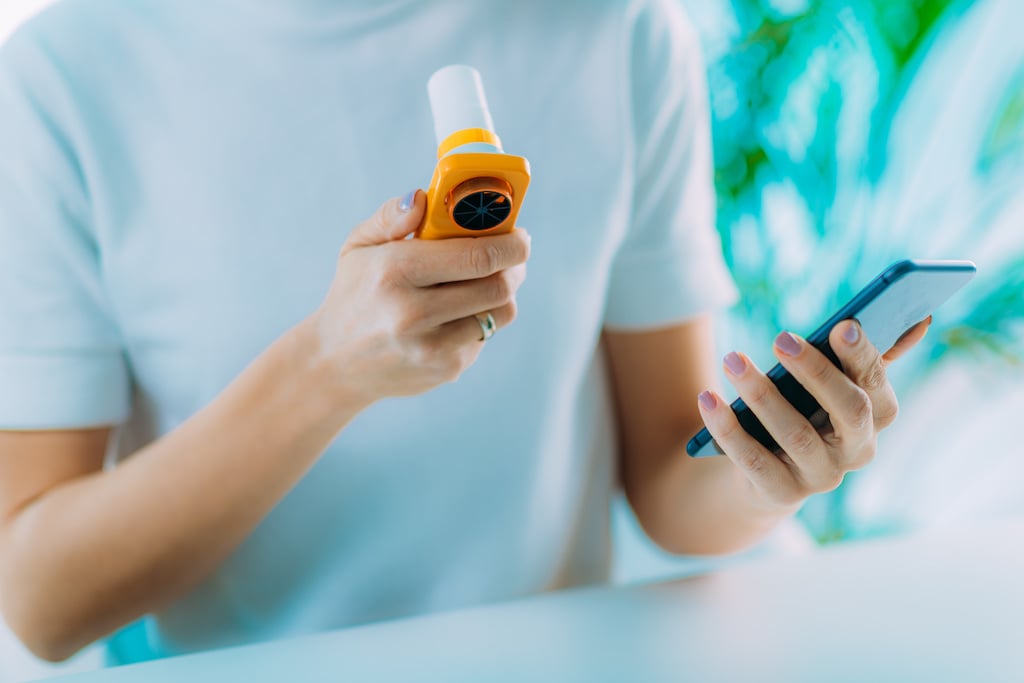We have learned a lot about how healthcare works — or sometimes doesn't work — over the course of the COVID-19 pandemic. As providers struggled to respond effectively to the fast-spreading virus it became very apparent that we have some outdated and broken components of our healthcare system. COVID stretched our tired healthcare infrastructure to its limits, forcing us to become creative in providing care while accepting and adapting to modern technologies once thought to be prohibitively expensive or else categorized as passing novelties.
Recently, big leaps have been made through healthcare organizations' willingness to adapt to and use health technology. Most consumers are comfortable using all sorts of personal technological devices like smartphones, tablets, smart watches, and fitness trackers. Yet prior to the pandemic, many healthcare organizations were hesitant to integrate such smart technologies into everyday patient care. However, we quickly learned that technology could equate to the delivery of safer patient care as we worked to navigate the threats, risks, and uncertainties of COVID, especially for vulnerable and high-risk patients. During COVID, many payers quickly saw the value in incorporating monitoring and other health technologies into their chronic disease coverage and many are committed to maintaining telehealth coverage long term.
We're now about two years into the pandemic, and about two years into the transformations within our healthcare system that were facilitated by COVID. So, it seems like a good time to ask: Are the new technology-integrated telehealth models like remote patient monitoring (RPM), used within chronic condition management programs, here for the long haul? With support from big allies like the Centers for Medicare & Medicaid Services (CMS), the American Medical Association (AMA), and many private payers, it is clear that incorporating RPM into chronic care delivery is an increasing trend in healthcare, helping to not only adapt to care needs during a healthcare crisis but also providing a permanent, valuable, and effective way to deliver patient chronic care.
Healthcare + Remote Patient Monitoring = Forever
Healthcare organizations have been increasing their telehealth adoption over the past several years and patients aren't the only ones benefiting from this investment. Time-strapped clinicians are finding that telehealth services such as remote patient monitoring, especially as a facet of a chronic care management program, are making the act of caring for their patients more efficient, cost-effective, and just plain easier.
But the benefits go well beyond this. Keep reading and we'll highlight all the reasons why we think RPM is here to stay for the long haul, even after the COVID public health emergency has been retired to the history books.
Remote patient monitoring supports effective chronic condition management for high-risk patients.
Patients who have chronic diseases often require frequent follow-up. The better managed their chronic condition is, the more likely it is that they will remain healthier for longer. But going into a physical office visit with the regularity required to manage many chronic conditions is often not possible and, especially during COVID, can have risks that outweigh the patient benefit. Using technology-based remote patient monitoring in conjunction with chronic care management can decrease your patients' potential exposure to other illnesses and provide convenience and a level of interaction that promotes patient buy-in to their care plan and health goals.
Remote patient monitoring provides better care for all patients, especially those considered at-risk.
While chronic disease doesn't intentionally discriminate, we do know that lower socioeconomic populations hold a higher prevalence of long-term chronic conditions. Many factors can be attributed to this issue, including social determinants, lifestyle choices, and, in some cases, genetics.
Remote patient monitoring and care management technologies are powerful tools that can be used to identify and mitigate social determinants and lifestyle choices that can be deleterious to a patient's chronic condition in a sustainable way. These technologies can also reach patients who might have barriers to more frequent, traditional care. Barriers like poverty, living in rural areas, poor access to nutrition and lack of transportation can be identified and managed with the use of smart technology.
RPM technology provides a cost-effective solution that can decrease hospitalizations and readmissions.
The Centers for Disease Control and Prevention (CDC) notes that of our $4.9 trillion in annual healthcare expenditures, at least 90% of that cost can be attributed to caring for people with chronic and mental health conditions. Research from the American Action Forum goes on to show that annually, care for a person with a chronic disease costs an average that exceeds $6,000, or about 5 times more than someone without a chronic disease. These increased costs can be blamed on more frequent hospitalizations, emergency room visits, and higher use of prescription drugs.
Research has shown that using remote patient monitoring could greatly reduce hospital admissions. The University of Pittsburgh Medical Center reported that RPM helped to reduce its readmission rate by 76%. Between the cost savings associated with keeping patients healthier and out of the hospital and an average Medicare reimbursement of around $120 per month per Medicare beneficiary, utilizing remote patient monitoring technology and chronic care management is a win-win for all.
RPM is convenient and enables reliable access to expert care.
Remote patient monitoring is convenient for patients and healthcare teams. For patients, being able to receive the care and guidance they need from the comfort of their home, or wherever they may be situated, can improve the quality of their life exponentially. While chronic diseases more often affect older adults, that doesn't mean they are less busy than others. Being able to easily access care and self-monitor symptoms closely from wherever they are makes life a little easier, keeps patients more accountable for their lifestyle choices, and ultimately, keeps them healthier.
Telehealth and remote patient monitoring also add a layer of convenience to busy, time-strapped healthcare teams. Decreasing the number of in-person visits and having clinical support staff in place to monitor patients participating in RPM can leave clinicians with more time to care for the more urgent health-related issues that arise every day. Also notable, patients who participate in remote patient monitoring tend to be better engaged in their care, making it easier overall for practitioners to effectively care for them.
RPM enables wraparound care that can lead to better symptoms management.
Since chronic care management using remote patient monitoring technology provides real-time surveillance of chronic disease symptoms, patients can experience better control over their symptoms. Patients monitor their vital information at home, giving them a better idea of what leads to symptom exacerbation.
The frequent and consistent transmission of vital readings also means that clinicians can make faster decisions concerning their patient's health, thus helping avoid the need for more frequent emergency room visits and even hospitalizations. Remote patient monitoring allows healthcare teams to better coordinate the patient’s care across the patient's entire spectrum of care providers.
RPM technology can reach patients faster when natural disasters strike.
Vulnerable patients tend to have a greater risk of severe illness or death during a natural disaster, but emerging research is showing that telehealth services are often the easiest and quickest way to reach patients following such a disaster. Electricity and communications teams are often some of the first service providers on scene following a natural disaster, meaning that even if transportation is impossible, patients may still be able to reach healthcare teams using technology sooner.
Future of Chronic Condition Management Using Remote Patient Monitoring
One of the silver linings to the COVID pandemic is the drive towards the greater use of smart technology in healthcare. Before COVID, our healthcare system was sort of stuck in its old ways, and while the technology and the concept of remote patient monitoring already existed, most stakeholders were unwilling to take a gamble on it within their chronic condition management programs. The contagious and deadly aspects of this pandemic gave us the motivation to find alternative ways to care for patients. Ultimately, the result is a cost-effect care solution that we feel is here to stay for the long-haul because it works and it's good for our entire healthcare system.


